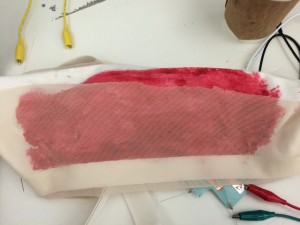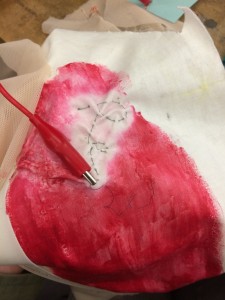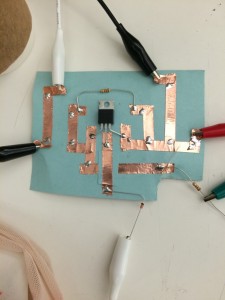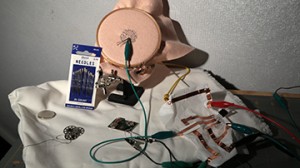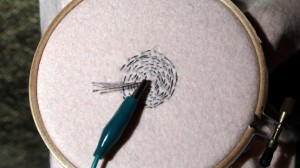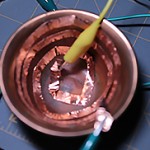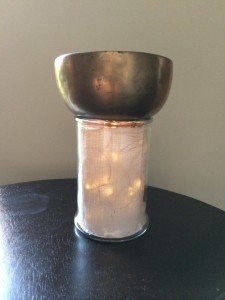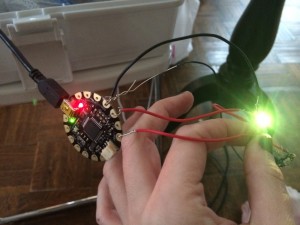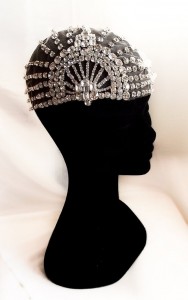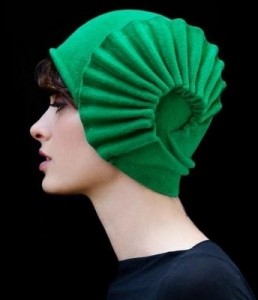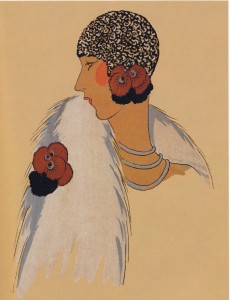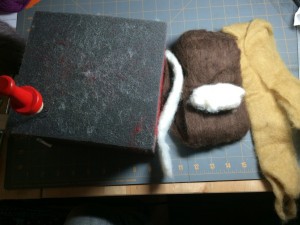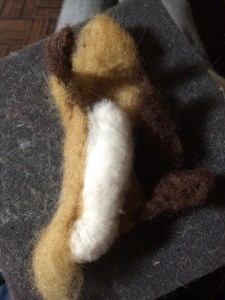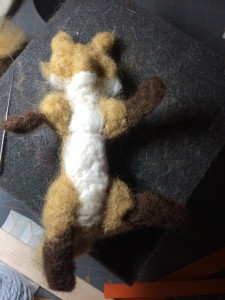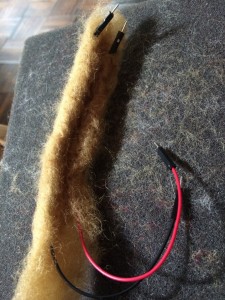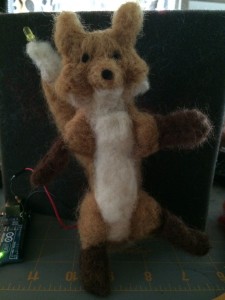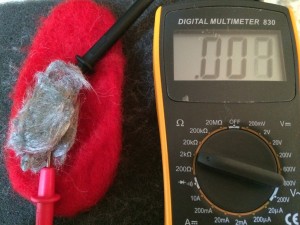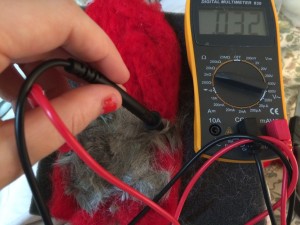Author Archives: binnk152
Flexinol Assignment
I wanted to create a breathing effect with the fabric, so I sewed the flexinol wire directly to the fabric and connected it to the Arduino using alligator clips and jumper wires. When I ran the Fade example sketch, it worked (eventually)!
Flexinol / ThermoInk Assignment – Bikini Kill Critical Design Piece
Speaker Assignment
Midterm – IED Meditation Lamp
Midterm Proposal – Headlamp (wink)
A headpiece that lights up with LEDs to create your very own wearable lamp.
1) Prototype – FLORA
2) Concept and design goal (What does your design seek to accomplish? Who are you designing for?
The concept for this headpiece (which may become a hat, depending on how the fabrication goes) is a update to ladies’ Art Deco headpieces and is meant to be worn as part of a costume or party attire. It will include a simple switch (metal snap that when connected closes the switch) to turn on the LEDs and may include a mic sensor that would add a whimsical element to it. The embellishments may include wool that has been folding using paper engineering techniques.
3) Materials list (What do you need to build your design)
- Flora and Neopixels (I’ve been a bit frustrated so far working with the Flora to be honest, and I may switch to an Arduino Trinket or other tiny Arduino along with LEDs)
- glass beads (reflects the light)
- mesh or silk fabric
- mic sensor
- wool roving (hand needle felted for the comfort of the wearer)
- metal snaps
- conductive thread
4) Prior art and precedents that inspired your design and direction.
Assignment 5 – Anthropomorphization with LEDs
This is a hand needle felted dancing Kitsune, a Japanese mythical creature whose tail lights up. Kitsune are known for being tricksters, at times malicious ones, but generally are playful. The rapid lighting of the LED (controlled by Arduino) signifies that this is a playful Kitsune.
Playful Dancing Kitsune (no switch)
FYI – Sparkfun is having a sale on E-Textiles!
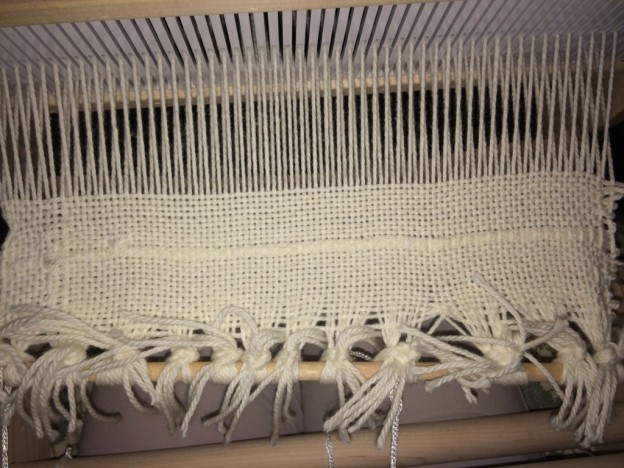
Weaving, part two: after watching the YouTube video a million times
I watched the YouTube video on a loop until I finally got the loom warped correctly.
